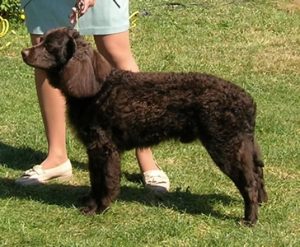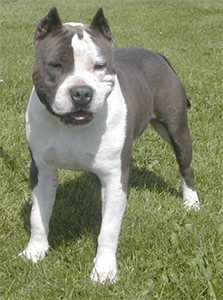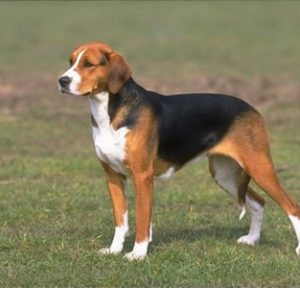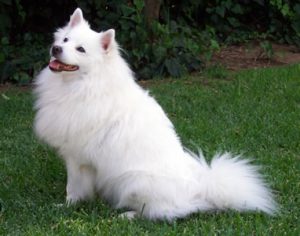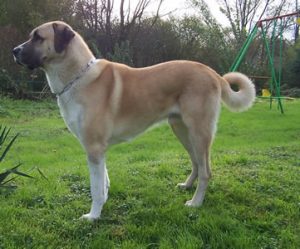
The Anatolian Shepherd Dog also known as Karabash (Turkish literal meaning: blackhead) is a breed of dog which originated in Anatolia (central Turkey).
Appearance
The Anatolian is a muscular breed, with thick neck, broad head, and sturdy body. Its lips are tight to its muzzle and it has triangular drop ears. It stands 29 to 36 inches (80 to 100 cm) females are between 27 to 31 inches (66 to 71 cm) and weighs between 90 and 150 pounds (70 to 90 kg), with females on the smaller side and males on the larger side. The coat may be any colour, although most common are white cream, “sesame,” and white with large coloured spots that do not cover more than 30% of the body—known as piebald—these colours may or may not be accompanied by a black mask and/or ears. They have a thick double coat that is somewhat wirey, that needs to be brushed 1-2 times a week in warm weather due to excessive shedding. They have very thick hair on their neck to protect their throat. They are seen with docked as well as intact tails. They are a naturally thin animal with a large rib cage and small stomach. They look as if they are heavier than they actually are, due to the thick coat.
Temperament
The Anatolian was developed to be independent and forceful, responsible for guarding its master’s flocks without human assistance or direction. These traits make it challenging as a pet; owners of dogs of this breed must socialise the dogs to turn them into appropriate companions. They are intelligent and can learn quickly but might choose not to obey; this is not a dog for a beginning or shy owner. They become very protective of other animals in the household, and will treat them as their “flock.” They have also been known to chase bears to protect their charges. According to Turkish shepherds, three Anatolian Shepherd Dogs are capable of overcoming a pack of wolves and injuring one or two of them. These dogs like to roam, as they were bred to travel with their herd and to leave the herd to go hunt for predators before the predators could attack the flock. Therefore, they need lots of room to run. They will look for any opportunity to go exploring on their own, so a secure fence is needed to keep them home. If they do happen to escape, don’t worry, they know their way back home. They will return home on their own almost 100% of the time. It is recommended to micro-chip and tag pets. A six foot tall fence is necessary, as anything smaller could easily be jumped by the large breed. This breed is not recommended for living in small quarters. If left outside at night, the breed will bark and howl at any noise they hear, as they have excellent hearing capabilities. They do well with other animals, including cats if they are introduced while still a puppy and have their own space. It is not recommended to pen this type of dog in a small enclosure with another dog. Since they were bred for protection they can become territorial, especially in confined living areas. They are very loving and loyal animals who do well with children, except occasionally knocking over small children due to their large size. They are not overly active, or destructive, and they can become quite comfortable and lazy in a household setting. They mature between 18–30 months. Both puppies and adults seem to have little interest in fetching or chewing. Rather, they prefer to run and sometimes swim. Overall this breed is very loyal, and protective of its owner. They need around 30–60 minutes of moderate exercise per day. They do not do well off leash.
—————————————————————————————————————–
CARING FOR YOUR DOG NEWSLETTER – Delivered Directly To Your Inbox – Starting Immediately – SIGN UP FOR FREE TODAY
—————————————————————————————————————–

